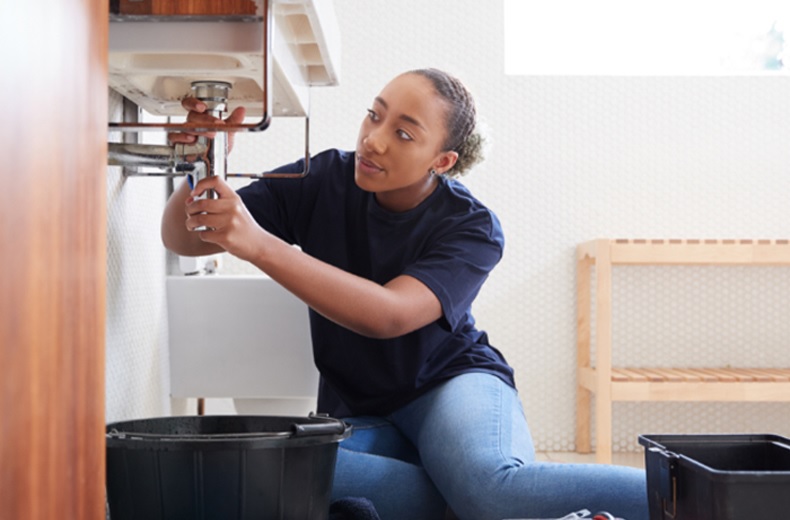A Detailed Overview to Efficient Hot Water Heater Installation for Ideal Efficiency
Getting started on the task of mounting a hot water heater is an endeavor that requires accuracy and a systematic strategy for accomplishing ideal efficiency. The procedure starts with the essential choice of selecting the ideal heating unit tailored to the particular demands of your household, considering factors such as kind, energy, and dimension resource. When selected, preparing the installment area to satisfy safety criteria is critical. Nevertheless, the journey does not end here. As you continue, the intricacies of attaching water system lines and establishing reputable electrical or gas connections wait for, appealing understandings right into guaranteeing performance and dependability.
Choosing the Right Hot Water Heater

Following, consider the size and capability of the hot water heater. It's vital to evaluate your home's warm water requirements, which can vary based on the variety of owners and their use patterns. An unit that's also little may cause insufficient warm water, while an extra-large design could result in unneeded power consumption.
Performance rankings additionally play an essential duty in option. Try to find water heating systems with high Power Factor (EF) scores, indicating remarkable efficiency and minimized power usage. Tankless versions, though generally more costly ahead of time, offer significant power savings in time as a result of their on-demand heating capabilities.
Preparing the Installation Area
Before installing a brand-new hot water heater, precise prep work of the installation location is necessary. This ensures a smooth setup procedure and aids avoid future issues (Water Heater installation Alabaster AL). Begin by choosing an ideal place that abides with local building regulations and security standards. The area must be dry, well-ventilated, and available for maintenance. It's important to gauge the area thoroughly to fit the hot water heater's measurements, making sure ample clearance around the system for efficient operation and maintenance.
Following, eliminate any debris, dust, or blockages from the site to create a clean atmosphere. Examine the floor for stability, as the hot water heater will require a solid, degree surface to run efficiently. If needed, set up a drip pan underneath the device to capture potential leakages or spills, preventing water damages to the surrounding location. In areas vulnerable to seismic activity, take into consideration setting up seismic bands to protect the heating system strongly in position.
Furthermore, make sure that all needed tools and materials get on hand prior to starting the setup. This includes items such as wrenches, screwdrivers, a degree, and any added equipment required for safeguarding the heating unit and mounting. A well-prepared installment location sets the foundation for an effective hot water heater setup, maximizing efficiency and security.
Connecting Water System Lines
When connecting water lines to your recently mounted hot water heater, it is critical to ensure that all connections about his are leak-free and safe and secure to preserve reliable procedure and avoid water damages. Begin by determining the hot and cold water system lines. The cold water inlet is commonly marked with a blue tag or a "C", while the warm water electrical outlet is noted with a red label or an "H".
Usage adaptable hot water heater adapters to facilitate a much easier setup procedure. These connectors can soak up vibration and permit slight motion, reducing the threat of leakages. Prior to attaching the ports, position a plumber's tape around the threaded ends of the hot water heater's inlet and electrical outlet pipes - Plumber Alabaster AL. This tape serves as a sealant, protecting against leaks. Very carefully link the versatile tubes to the corresponding inlet and electrical outlet, guaranteeing that they are limited however not over-tightened, which might harm the strings.
Once connections are in location, slowly transform on the main water system shutoff. Check each link for leakages by aesthetically really feeling and examining for dampness. Tighten up links as essential, and make certain the pressure safety valve is correctly set up, safeguarding against too much stress build-up.
Establishing Electrical or Gas Links
Correctly establishing up the electrical or gas connections for your water heating system is a vital step to ensure reliable and risk-free operation. For electrical water heaters, start by verifying that the electric circuit is compatible with the heating system's voltage and amperage demands.
For gas hot water heater, safety and security is critical. Validate that the gas supply is off before continuing. Connect the gas line to the hot water heater using a versatile gas adapter, ensuring it is effectively threaded and sealed with pipeline joint Drain Cleaning Alabaster AL compound or Teflon tape appropriate for gas links. Tighten the connections with a wrench, taking treatment not to over-tighten (Water Heater installation Alabaster AL).
Once connections are made, inspect for any type of possible leakages. For gas lines, apply a soapy water service to the joints; bubbles suggest a leakage. For electric links, double-check that all electrical wiring is safe and effectively insulated, maintaining conformity with regional electric codes.
Examining and Adjusting for Effectiveness
With the electric and gas links firmly in area, the next step is evaluating the functional performance of your water heating unit. Begin by thoroughly turning on the water supply and ensuring there are no leakages at any of the joints or shutoffs.
Next, perform a complete examination to make sure the heating elements or burner are working correctly. For electrical heating units, utilize a multimeter to validate if Look At This the components are drawing the appropriate existing. In gas designs, observe the burner fire; it ought to be blue and steady, suggesting efficient burning.
Adjust the setups as required to eliminate inadequacies. Think about applying insulation procedures, such as adding a hot water heater blanket, to better improve performance by decreasing warm loss. In addition, check the anode rod's problem, as a shabby rod can minimize performance and lead to container deterioration.
Final Thought
Efficient water heater installation is vital for ensuring ideal efficiency and energy savings. Securely attaching water supply lines and thoroughly establishing up electrical or gas connections minimize prospective concerns.

Appropriately establishing up the electric or gas connections for your water heating system is a critical step to guarantee secure and efficient operation. For electric water heating systems, start by validating that the electric circuit is suitable with the heating system's voltage and amperage needs. Attach the gas line to the water heater making use of a flexible gas adapter, guaranteeing it is properly threaded and secured with pipeline joint substance or Teflon tape ideal for gas links.